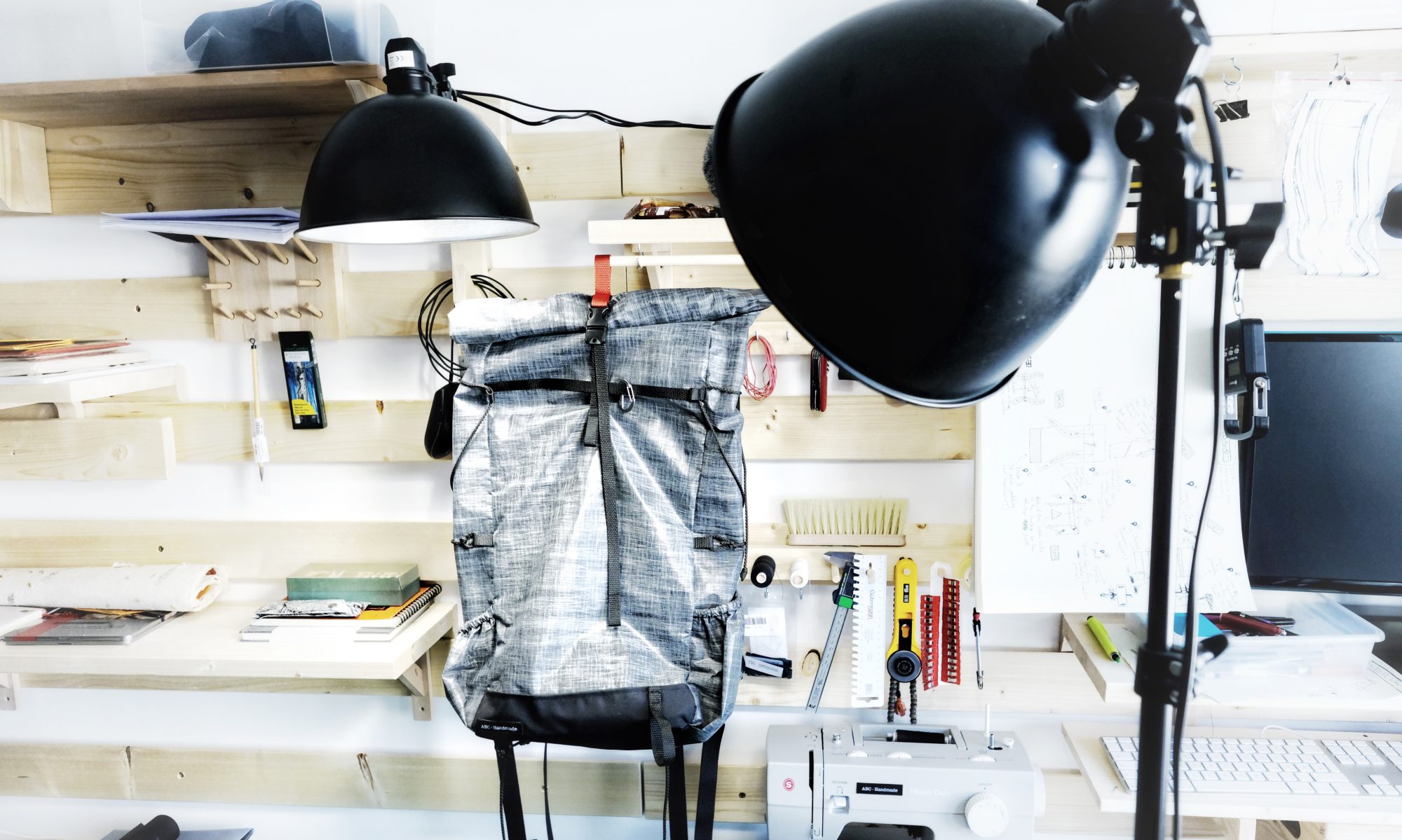The final shape is extremely pleasing, and mostly due to the combination of the V-shape design and the very subtle curves. To ensure the cuts were symmetrical given the slightly higher complexity than usual, this was the first time I spent the time creating a mostly complete pattern for the main panels (all but the roll-top panels) prior to cutting any fabric. I usually build patterns – a posteriori – as a mean to record a shape I ended up with, if it turned out to be pleasing.

All in all, there are 14 different panels of various sizes that came into building the main compartment (shoulder straps not included). I only created a pattern for the major parts, and cut the rest out of “experience”.
The best way I’ve found to build durable patterns is to cut them out of thin Tyvek as I explained briefly here. It’s a little more investment than simple paper, but it holds a lot more abuses.






